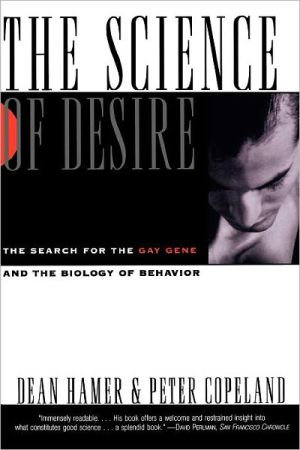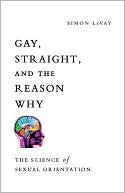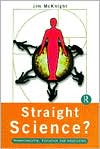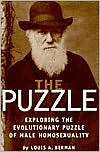The Science of Desire: The Search for the Gay Gene and the Biology of Behavior
In July 1993, a scientific event made front-page news: the discovery that genetics plays a significant role in determining homosexuality. In The Science of Desire, Dean Hamer -- the scientist behind the groundbreaking study -- tells the inside story of how the discovery was made and what it means, not only for our understanding of sexuality, but for human behavior in general.\ In this accessible and remarkably clear book, Dean Hamer expands on the account of his history-making research to...
Search in google:
In July 1993, a scientific event made front-page news: the discovery that genetics plays a significant role in determining homosexuality. In The Science of Desire, Dean Hamer -- the scientist behind the groundbreaking study -- tells the inside story of how the discovery was made and what it means, not only for our understanding of sexuality, but for human behavior in general.In this accessible and remarkably clear book, Dean Hamer expands on the account of his history-making research to explore the scientific, social, and ethical issues raised by his findings. Dr. Hamer addresses such tough questions as whether it would be possible or ethical to test in utero for the gay gene; whether genetic manipulation could or should be used to alter a person's sexuality; and how a gay gene could have survived evolution.A compelling behind-the-scenes look at cutting-edge scientific inquiry, as well as a brilliant examination of the ramifications of genetic research, The Science of Desire is a lasting resource in the increasingly significant debate over the role that genetics plays in our lives. Publishers Weekly In this admirably lucid and surprisingly lively book, Hamer, chief of genetic research at the National Cancer Institute, assisted by Copeland, a correspondent for the Scripps-Howard newspaper chain, recounts his discovery of a pattern on the X chromosome that, in families with two gay brothers, 33 out of 40 such pairs share. He was thus able to link sexual orientation with genetic makeup. This discovery is all the more noteworthy when we consider, as Hamer points out, ``the scientific literature contains more articles on the genetics of eye color in fruit flies than on the biology of human sexuality.'' He is careful to explain that genetic predisposition alone does not ``cause'' homosexuality; environmental factors must also be taken into account, and a complete picture of the genesis of homosexuality is still far in the future. Hamer simplifies complex ideas for general readers (the structure of interlocking strands of DNA is described as ``chemical Velcro'') and explores the ethical implications of a ``gay gene'' with laudable compassion and common sense. (Oct.)
Preface131The Search for a "Gay Gene"172The Study and the Team393Who's Gay?524Building Family Trees745A Mother's Legacy916Looking for Linkage1057The Harvard Crucible1238Going Public1349Biological Mechanisms: Genes, Hormones, and the Brain14910Psychological Mechanisms: Sissies, Freud, and Sex Acts16411Evolution18012Beyond Sex18713Beyond the Lab: Implications of a "Gay Gene"207Appendix A: A Linkage Between DNA Markers on the X Chromosome and Male Sexual Orientation223Appendix B: Interview Questionnaire234Notes244Sources and Further Reading250Index259
\ Publishers Weekly - Publisher's Weekly\ In this admirably lucid and surprisingly lively book, Hamer, chief of genetic research at the National Cancer Institute, assisted by Copeland, a correspondent for the Scripps-Howard newspaper chain, recounts his discovery of a pattern on the X chromosome that, in families with two gay brothers, 33 out of 40 such pairs share. He was thus able to link sexual orientation with genetic makeup. This discovery is all the more noteworthy when we consider, as Hamer points out, ``the scientific literature contains more articles on the genetics of eye color in fruit flies than on the biology of human sexuality.'' He is careful to explain that genetic predisposition alone does not ``cause'' homosexuality; environmental factors must also be taken into account, and a complete picture of the genesis of homosexuality is still far in the future. Hamer simplifies complex ideas for general readers the structure of interlocking strands of DNA is described as ``chemical Velcro'' and explores the ethical implications of a ``gay gene'' with laudable compassion and common sense. Oct.\ \ \ \ \ Library JournalAfter reading books by Charles Darwin and Richard Lewontin, Hamer a yeast geneticist at the National Cancer Institute discovered that little is known about behavioral genetics in humans. He was intrigued enough to change his research direction. This book is a personalized account of the luck, pleasures, and pitfalls involved in scientific investigation-from the germ of an idea about genetic markers for homosexuality to results suggesting that the X-chromosome carries a marker for male homosexuality and speculation on the evolutionary and physiological mechanisms involved. Hamer's research included an intimate exploration of the development of homosexual behavior, family histories, and, finally, careful statistical and molecular analysis. Fortunately for Hamer, he already occupied a prestigious position that covered his day-to-day laboratory needs since the path he chose had many barriers, including hostility from celebrated scientists and intense public attention. While the topic may be offensive to some, this is an engaging odyssey through the mind of a scientist on a controversial path, with much musing, justification, and reassessment along the way. Recommended for both lay readers and specialists.-Constance Rinaldo, Dartmouth Coll., Hanover, N.H.\ \







